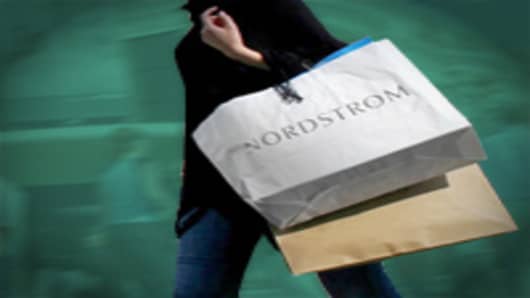It seems that shoppers want their Prada bags, Christian Louboutin shoes and Dior dresses after all.
Luxury retailers are showing signs of life after being bludgeoned by The Great Recession, with companies from Saks Fifth Avenue to Nordstrom to Tiffany churning out respectable sales increases during the make-or-break holiday selling period.
But although recent stock market gains have given affluent consumers a reason to celebrate —and shop — merchants are all too aware that performance is nowhere near the robust, pre-recession levels.
In turn, toney chains are re-jiggering their businesses to the new normal by playing up lower-priced merchandise and expanding outlet divisions as they tip toe back into growth mode.
“I think the well-heeled customer is still there, they’re being more discriminating and [buying] less, but they are there,” says Gilbert Harrison, chairman and founder of Financo, the boutique investment firm.
According to a recent Citigroup research report, the luxury retail sector is headed for a bullish period.
“The positive wealth effect of rising world equity markets, combined with relatively low unemployment for these [high-income] consumers and improving confidence, should lead to higher spending levels in 2010,” says analyst Deborah Weinswig in the report, which cites retailers such as Saks Fifth Avenue and Tiffany as among the companies best positioned to benefit.
Dana Telsey, chief executive officer of Telsey Advisory Group, agrees, saying this year will be defined by “luxury spend versus the need-based spend of 2009."
And despite all the predictions that luxury shoppers would be wracked with guilt, that mindset never materialized, say experts.
“The concepts of stealth wealth and luxury shame are really myths” and an invention of the media, says Ron Kurtz, president of The American Affluence Research Center.
Only seven percent of upscale consumers polled by the center said they had cut back or deferred spending because “they were self conscious about their financial situation being better than friends or family,” says Kurtz.
Saks In Focus
Saks Fifth Avenue’s research mirrors that finding.
Shoppers, it turns out, are dangling their Hermes shopping bags guilt-free, says Saks CEO Steve Sadove.
Although the retailer managed a 9.9 percent gain in December same-store sales, Sadove says, “certainly, I wouldn’t have anybody claiming victory."
For one, Saks’ combined same-store sales for November and December fell 7.3 percent, he noted.
“Some of the aspirational customer went out of the market, and some of the high-end customer is purchasing less.”
Still, increased store traffic, full-price selling and tourism are key indicators that “consumers are coming back," he adds
When that shopper is buying, she’s focused on value, and on filling in her wardrobe with items that can be used for multiple occasions, says Sadove.
In a bid to adjust, Saks is expanding the opening price point part of its vendor mix. For example, it is lowering the Prada opening price point from $1,000 to $700.
Meanwhile, Off 5th, Saks’ discount concept, has been targeted for growth.
The retailer plans to open about six Off 5th stores a year, compared to no full-line Saks stores.
“I do believe that as people look towards value, and they love luxury brands, that there is an opportunity for growth for Off 5th,” says Sadove.
The spin-off concept is also evolving from a “leftover strategy” built on purging goods from the parent chain, into one where 80 percent of the merchandise is new and made expressly for Off 5th.
Nordstrom plans to open about 15 Nordstrom Rack outlet stores a year, compared to three full-line stores. The division has posted three consecutive quarters of positive same-store sales.
“We see a lot of opportunity there,” the company's president, Blake Nordstrom, told analysts and investors during its recent third-quarter conference.
What’s more, Macy’s Bloomingdale’s division is rumored to be entering the outlet business.
The parent chain singled out its 40-store division as the star performer in December.
But Terry Lundgren, chief executive officer of Macy’s, was sober about the notion of a luxury rebound.
“Luxury was hit the hardest and the quickest — we’re all up against [last year’s] softer numbers,” he told CNBC.com at a Financo reception during the National Retail Federation’s annual show in New York recently.
Still, he saysBloomingdale’s is ripe for profitable growth and Macy’s is committed to funding that growth.
At the Financo conference, Michael Gould, Bloomingdale’s CEO, highlighted the accessories business — from watches to leggings and t-shirts, as bright spots.
In addition to upscale department stores, high-end jewelry merchants are showing signs of a comeback.
Wrapping up a successful holiday selling season, Tiffany is pursuing stateside and international expansion — China is a focus — and growth via “innovative product lines with wider appeal,” such as its collection of key-shaped pendants that launched last year, Telsey said.
But while the overall outlook for luxury retail is sunny compared to a year ago, the market has fundamentally changed.
“The indiscriminate euphoria of some of the shopping behaviors that went on—there’s been a wake up call,” says Sadove. “People will continue to look for value. From an attitude perspective, the customer is going to be thinking differently.”




